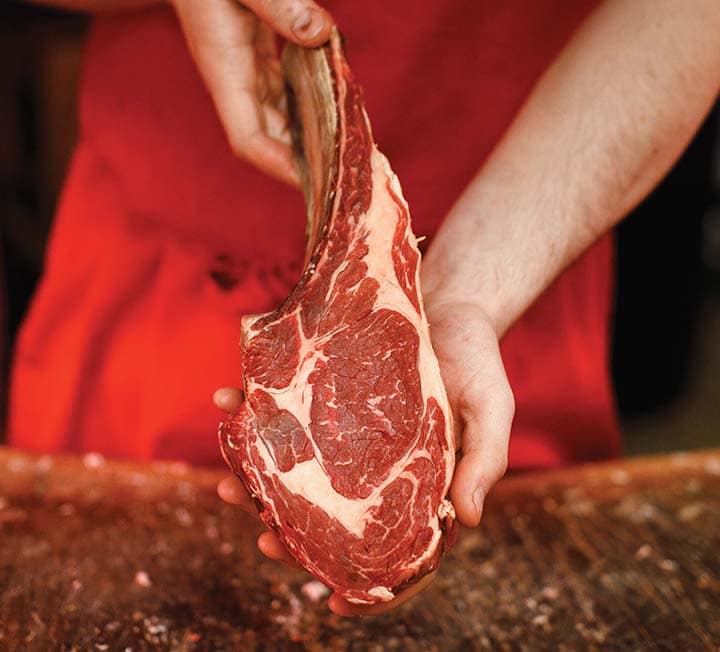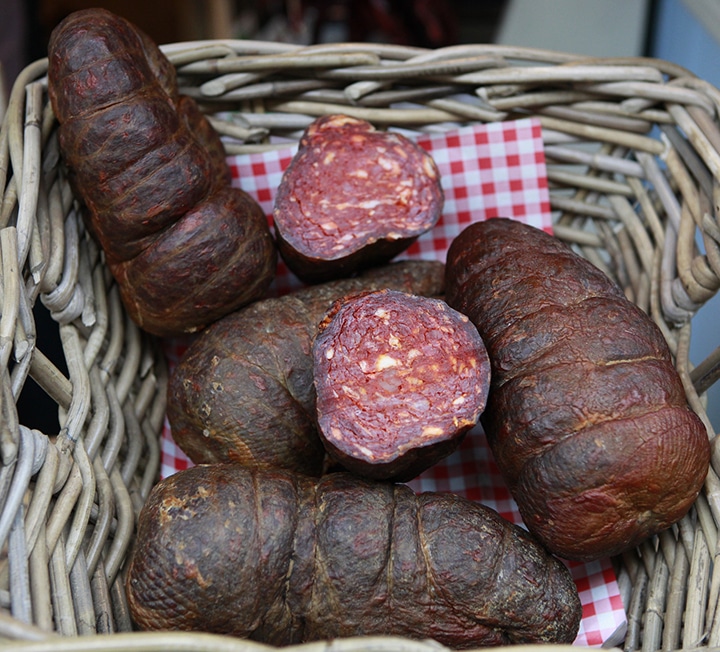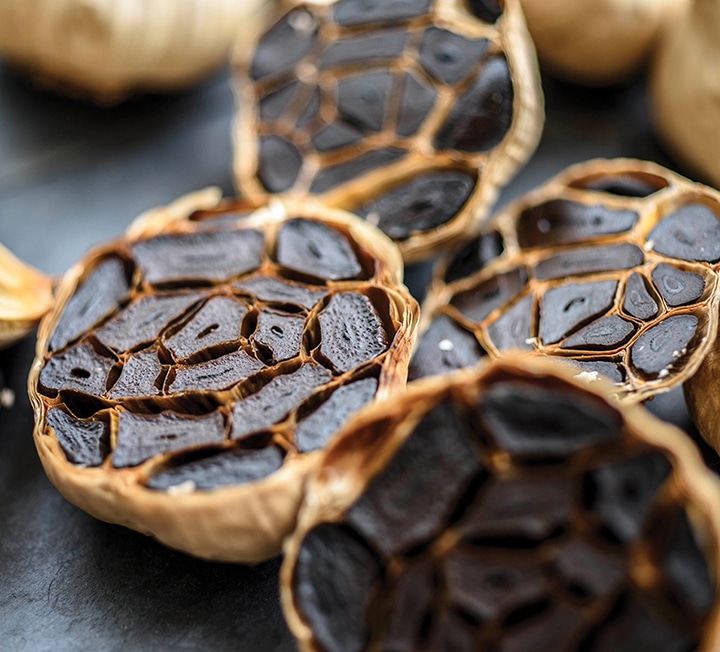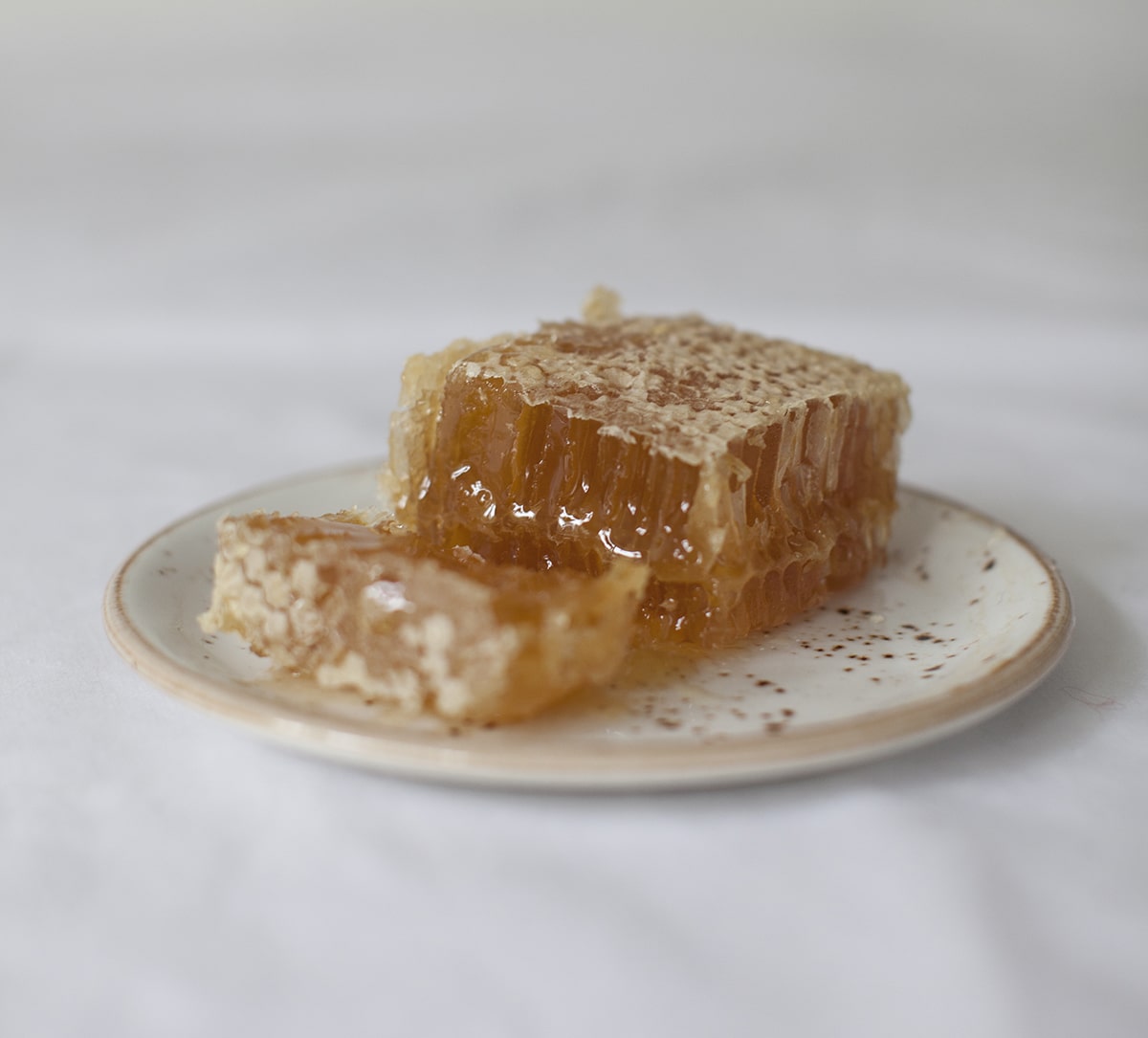Five: lesser-known meat cuts
A quick guide to some of the more unusual cuts of meat found on Borough Market’s stalls


“COLLAR BACON’S PLEASING RATIO OF MEATY GOODNESS TO FATTY CREAMINESS MEANS IT CRISPS UP LIKE AN ABSOLUTE DREAM”
Tomahawk
A tomahawk cut can be taken from either a cow or a pig: beef tomahawk is usually a ribeye steak attached to the short rib (pictured above); ‘tomapork’, as it’s affectionately known at Northfield Farm, is a pork chop with the belly still attached. Both are great for sharing; the latter is exceptionally good on the barbecue, sealed till crisp and golden then cooked through for 20 minutes.
Collar bacon
While a highly traditional feature on the butcher’s counter, you won’t find collar bacon among the generic back and streaky in supermarkets. Taken from the fleshy part that runs from the shoulder to the neck of the pig, this is the closest bacon comes to being marbled. Its pleasing ratio of meaty goodness to fatty creaminess means it’s intensely flavoursome and crisps up like an absolute dream.
Scrag end
The traditional basis for scouse – the meat stew so popular on Merseyside it became a slang term for Liverpudlians – scrag end is taken from the lamb’s neck, but isn’t the same as the more familiar fleshy, fillet-like neck cut. This is a hard-working muscle, sold on the bone. It requires some attention when cooking, which should be done over several hours, but a little patience will reward both palate and pocket.
Onglet
Better-known in the United States as ‘hanger’ steak, onglet is found hanging (hence the American moniker) from the diaphragm. Don’t let the fact this dark red muscle has very little fat – and that it’s quite, well, fibrous – scare you out of cooking it: flash frying for a couple of minutes each side is all it takes. Serve with something punchy and strong-flavoured – it can certainly hold its own.
Venison barnsley chop
The barnsley chop is most closely associated with lamb, but it also makes for a tasty cut of venison. At Shellseekers Fish & Game, you’ll find it in the form of deep red wild sika meat, shot by owner Darren himself and butchered on site. Cook it in much the same way you would lamb, but be aware of its relative leanness. For maximum tenderness, ensure you allow plenty of time for the meat to rest before serving.


